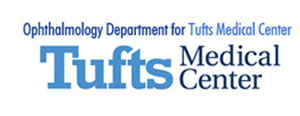Light enters the eye through the cornea (the clear front window of the eye). The amount of light that enters is controlled by the pupil. In people with perfect vision, the light focuses directly on the retina and the image is sent to the brain. In many people with vision problems, light does not focus directly on the retina. This produces visual distortions.
Common Vision Problems
Nearsightedness (Myopia)
Nearsightedness is a visual problem that affects about one-third of the population. People who are nearsighted are able to clearly see items close up, but have trouble with their distance vision. Nearsightedness occurs when the eyeball is slightly longer than usual, causing light to focus on a point in front of the retina rather than on its surface. Nearsightedness can be corrected with glasses, contacts, or refractive surgery.
Farsightedness (Hyperopia)
Farsightedness affects about one-forth of the population. Farsighted people have no problem seeing distant objects but struggle with seeing nearby items. Hyperopia occurs when the eyeball is shorter than usual, causing light rays to focus behind the retina instead of directly on it. Refractive surgery, glasses, and contact lenses can all be used to correct this visual problem.
Astigmatism Correction Now Available
If you have been considering vision correction in the Boston area and were discouraged because you have astigmatism, New England Eye Center has great news for you. Astigmatism is probably one of the most misunderstood visual issues. Many people believe there is no alternative to correcting this disorder, other than contact lenses and glasses. This is actually incorrect and the physicians at New England Eye Center offer state of the art technology and advanced vision correction alternatives including LASIK, PRK, and advanced lens technology for cataract patients with astigmatism
Astigmatism is simply a term referring to how your eye focuses light. This is typically caused by an irregular shaped cornea but can also be partly due to the lens in the eye. Most people equate this irregular shape with the shape of a football. Like being nearsighted or farsighted, astigmatism can cause distortions in your vision. You can have astigmatism alone or in combination with nearsightedness or farsightedness.
Having astigmatism is quite common. If left uncorrected, it can cause eye strain, headaches and difficulties in everyday tasks from reading to outdoor activities. While glasses and many contact lenses are on the market to effectively correct astigmatism it is important for you to know you have options. The physicians at New England Eye Center routinely perform LASIK, PRK and lens procedures for patients with astigmatism and give them freedom from contacts and glasses. To ask more questions about astigmatism and your vision correction options at New England Eye Center please call 888-515-2745 to book a complimentary screening or request an information package.
Presbyopia
Presbyopia is different from other common visual problems because it is caused by an age-related process. When people reach middle age (usually in the forties), nearby items start to appear blurry. People with presbyopia may struggle while working on a computer or find that they have to hold a menu at arm’s length in order to read it. Presbyopia affects everyone, even those who had perfect vision in the past. It is widely believed to be caused by a loss of flexibility in the lens of the eye. Treatment options for presbyopia include monovision, ck surgery, bifocals, progressive addition lenses, reading glasses, and multifocal lenses.
If you would like to find out more about treatment options for common vision problems or would like to arrange a thorough eye examination, please contact our laser eye surgery practice today.




